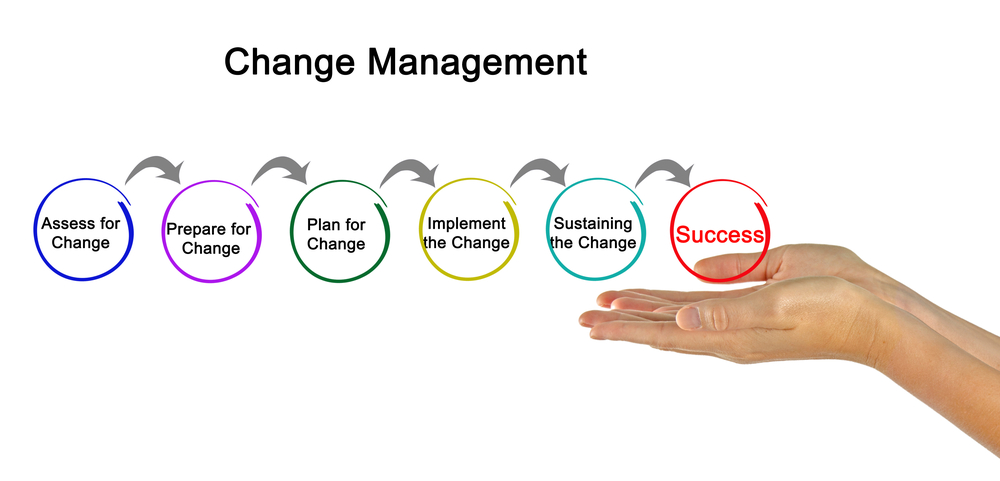PROJ6003 Project Execution and Control
Changes Request within the Project
Problem 1: The Project Organizational Structure
Lack of consistency or ability to be a project manager for the Project Execution team Gary Anderson indicates that the organizational members who held the final say over who was responsible for completing the individual phases of the project team had not established the individual tasks and obligations of the actual project team. The project manager’s accountabilities that would concentrate on the expense and efficiency of the project, whilst the project manager’s assistant concentrate on the technical reports to the engineering manager, signify a greater void in the clarity of the project layout, to reach the project target. The utilization of the organizational structure matrix in project management helps organizations to optimize the usage of the pool of experts in the various strategic fields of the business while retaining their cost base. With the same perspective, Parks Corporation used the multi-disciplinary team of R&D, Research, Quality Assurance, Marketing, Buying, and Finance staff members to implement the system. This was planned to reduce the cost of the project by not hiring additional resources for the project and reducing the time and improving the quality of the project.
The technique to Manage:
During their employment, workers live in the same position (and even in the same unit). The systems of the matrix demand a high degree of teamwork compared with conventional systems of a single report; therefore workers have neglected to develop any organizational skills which are needed to interact with other elements in the company. Parks Corporation can define expectations for the employees which can help them get on board with the project and define the behaviour and expectations from an employee (Sy, Beach, & D’Annunzio, 2005). Training in a matrix structure is important for efficient operations. Efficient matrix firms offer regular instruction to improve ideal habits. The goal of continuous training is to build a shared vision and value system and to expand the viewpoints and skills of employees. One mistake made by businesses is not to inform workers regarding the matrix’s underlying characteristics. Mid- managers are not informed of how the matrix works and the criteria for an effective matrix process (Barlett & Ghoshal, 1990).

Problem 2: Human Resources Management
The position and the accountability clarification given to the project manager and team leaders by providing a consistent direction on the protocols and processes in the management of projects and on the respective operating frameworks in the matrix organisation is one of the main gaps in the Blue Spider Project. Also from the outset, the project manager’s requirements of hiring are based on the assumption that good management of a company should be a good boss, showing the lack of succession planning, as Gary has not been given the chance to develop as a project manager, but is at risk both for the project as well as for his future. Both those who worked on the Blue Spider Project had two supervisors and may have had even three had they worked on such a year this can lead to depleting quality of the project and increased time for the company. The core participants in the Blue Spider System could not understand exactly how and whether the tension was worsening between Anderson and the responsive managers. Parallel command chains diminish project managers ‘legitimacy by getting two control bases and jeopardize effectiveness. Conflicting orders from multiple heads contribute to confusion and failure in organisations increasing the cost for the organization as other departments will be affected.
The technique to Manage:
Participants find presenting staff with the ability to get to know each other as a best practice. Behaviour analysis indicates that when a previous partnership has been formed people are more likely to cooperate (Stopper, 1998). Importantly, the most productive workers in the matrix are the ones who actively reach out to and establish an informal network of collaborators. Informal networks prove to be important rather than traditional networks as they facilitate the job of investing in and securing capital for the execution of market policies (Hodgetts, 1968). Companies with cross-functional work experience are suggesting that their workers can more quickly and efficiently understand the matrix definition. They soon become those with massive, one-sided views from those with a smaller silo-focused view of the business. The appraisal process emphasizes the importance of operating in one company while evaluating staff success in different departments (Blomquist & Müller, 2006).
Problem 3: Project Structure & Charter
There was no clear objective and schedule for what to do from the Blue Spider. The whole project has also created increased costs in all respects. Regardless of the lack of a schedule for contact, concerns and anxieties emerged on the part of the consumer. Gary still has this scepticism, and apprehension leads to unreasonable requests from the customer to be fulfilled by the project manager. By the outset of the project, that will be decided. Even the customer questioned the project team’s competence and ability and formed a direct contact channel with the PC’s technical staff.
The technique to Manage:
A charter proposal is not a project plan either. A strategy is comprehensive and is then addressed in the project process. The project plan is a detailed strategy, which contains all project preparation outcomes, project duration, project processes, task period, process life, capital needs, project timeline, cost forecasts, budget schedule, and a production strategy. The project charter is an effective preparation tool in the implementation process of the project and a means of collaboration that can be consulted constantly. The guide offers a brief description of how the project is being carried out and the required tasks and duties, resources and general strategies. This includes an outline of the project. It also allows potential project team leaders to familiarize themselves more easily with the project – all in one concise paper. A project charter is the safety plan to ensure the performance of managers, capital and stakeholders. A project charter is often offered by administrators and organizations to assign the responsibility and power to the project manager (McKeever, 2006).
Problem 4: Management Priority and Communication
Besides, though the project lacks support from top management high involvement from the functional manager, the director of engineering was interruptive. Even though one director could not represent the top management of PC, the integrity of the management questionable as the director of engineering from the beginning starts with unethical behaviour and working principle. This resulted in running out of budget, schedule and losing its goodwill. Even frustration by all parties involved in the project and failure on part of PC was worth to mention. Henry Gable also sends Paul Evans instructions and secretly checks content, not in the original specification. This causes distrust within Parks Corporation’s usable divisions and also wastes precious capital because the content that has been checked in the last two months. The Park Company and Lord’s Enterprises have also created distrust. Henry Gable’s malfunctioning nature is seen once again when he leads the latest work without consulting with the client or the project office.

The technique to Manage:
Projects should have broad, long-term operational orientation and should be actively embraced by management, to allocate capital, preparation, goals, and expectations for projects to fit operational priorities. To function as a whole, initiatives should be incorporated into the organizational system and frameworks and procedures of management (Englund & Graham, 2019). Developing a communication strategy is essential for internal and external communication with all the necessary stakeholders (Heldman, 2018).
Processes involved in submitting requests
This process for managing change requests is aimed at controlling approved changes, ensuring that the project continues to remain on the timeline, inside the budget, and providing the agreed deliverables. A framework for implementing, documenting, reviewing, authorizing and addressing project changes is the change management process. Changes are made where the variety, time or expense of one or more previously accepted deliverables are deemed necessary to adjust. Some adjustments would affect the project’s schedule and/or timeline. This method allows you to request a modification to the project, which includes
Change Request Form and CID logs are to be maintained throughout the submission process (Gido & Clement, 2003; PMI, 2004).
Options to satisfy for each change request
For Requested Change 1 and 2: The Parks Corporation should have Structure of Work Breakdown (WBS) – This document is important to every project as it clarifies a variety of project management practices and provides them with essential details. The WBS provides a comprehensive description of the scope of the project, tracks project progress, produces realistic estimates of the costs and deadlines and gives each team member specific objectives and a sense of how the job suits the overall effort. Anderson would have greatly benefited had a WBS been developed and Project Execution practices included in the WBS so he could have been much more proactive and not reactive in project management this will define expectations of each employee and training can be conducted correctly from the project manager to everyone associated with the project. The Earned Value Management Program-This integrative approach provides the project manager with a cost-effective timetable for the project, as well as strategic preparation and supervision. The key to the work of a value management program is the nature of the job breakdown. The program should have provided Anderson with details and information as to whether the Blue Spider project was: (1) in advance and under budget; (2) in advance of schedule and over budget; and (3) in line with schedule and under budget; or (4) in line with schedule and beyond budget. Anderson’s lack of communications with its clients, officials, and employees. This would also have kept Henry Gable from producing the JXB-3 material in secret and wasting money on the Blue Spider Project. Anderson would also have been a perfect instrument to assign work to the WBS; stop “do all by itself;” keep up-to-date with the expense and efficiency of the project; effectively burden the bureaucratic system of project management. The Responsibility assignment matrix is particularly useful for clarifying functions and roles in inter-functional / departmental projects and processes. The document stipulates who is responsible for executing the task to carry out it; who is ultimately responsible for carrying out the deliverables or activities properly and entirely, and to whom the individual is accountable; those who are searched out and who are communicated two-way and with whom progress is always sustained, often or not.
References
Barlett, C. A., & Ghoshal, S. (1990). Matrix management: Not a structure, a frame of mind. Harvard business review, 68(4), 138-145.
Blomquist, T., & Müller, R. (2006). Middle Managers in Program and Project Portfolio Management. Project Management Institute.
Englund, R., & Graham, R. J. (2019). Creating an environment for successful projects. Berrett-Koehler Publishers.
Gido, J., & Clements, J. P. (2003). Successful project management. Thomson/South-Western.
Heldman, K. (2018). PMP: project management professional exam study guide. John Wiley & Sons.
Hodgetts, R. M. (1968). Leadership techniques in the project organization. Academy of Management Journal, 11(2), 211-219.
McKeever, C. (2006). The Project Charter–Blueprint for Success. CrossTalk: The Journal of Defense Software Engineering, 19.
Pmi, A. (2004). guide to the Project Management Body of Knowledge. In Project Management Institute (Vol. 130).
Stopper, W. G. (1998). Agility in action: Picturing the lessons learned from Kodak and 23 other companies. Human Resource Planning, 21(1), 11-14.
Sy, T., Beach, L., & D’Annunzio, L. S. (2005). Challenges and strategies of matrix organizations. Human Resource Planning, 28(1), 39-48.



